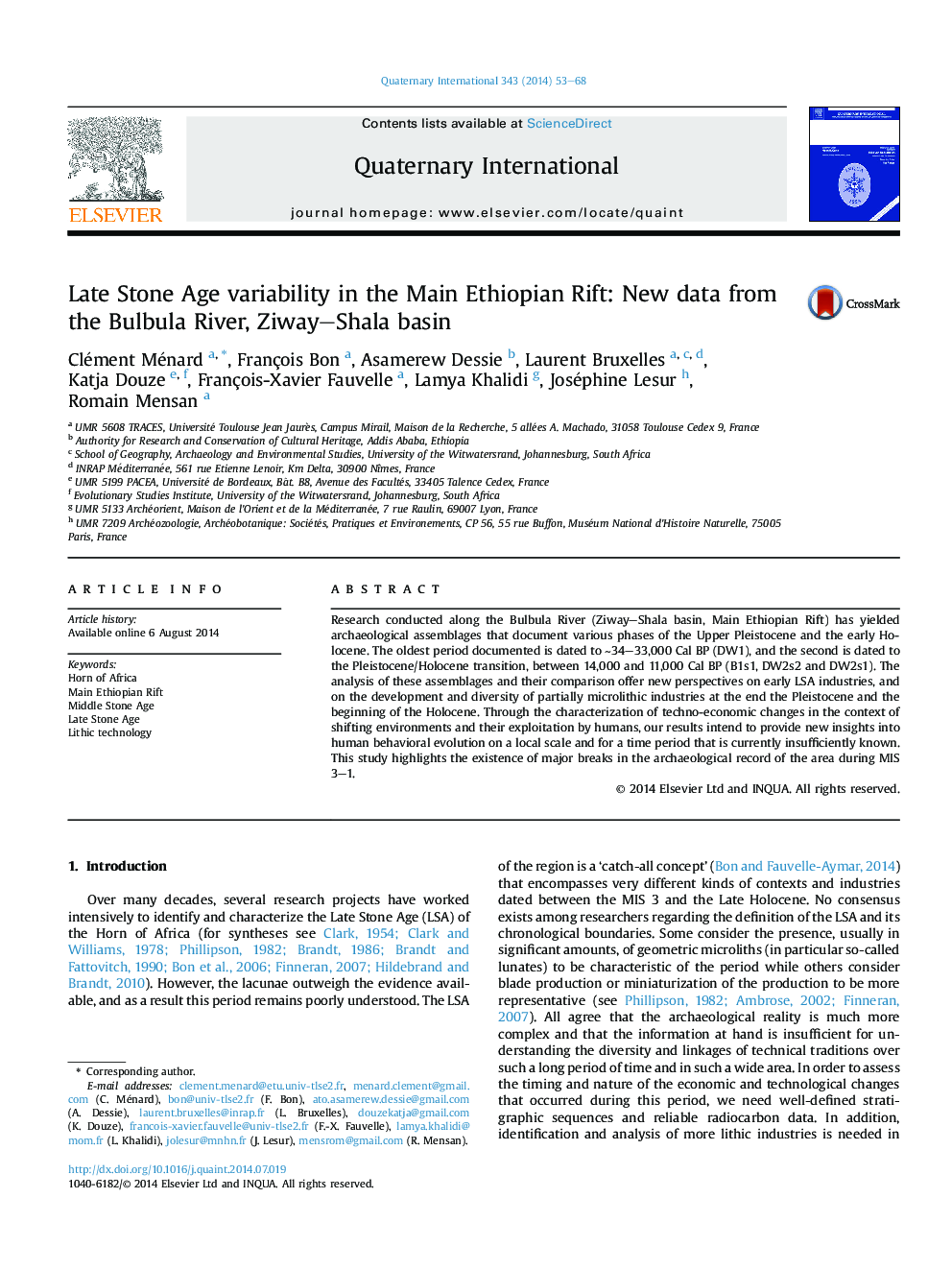| Article ID | Journal | Published Year | Pages | File Type |
|---|---|---|---|---|
| 1041402 | Quaternary International | 2014 | 16 Pages |
Research conducted along the Bulbula River (Ziway–Shala basin, Main Ethiopian Rift) has yielded archaeological assemblages that document various phases of the Upper Pleistocene and the early Holocene. The oldest period documented is dated to ∼34–33,000 Cal BP (DW1), and the second is dated to the Pleistocene/Holocene transition, between 14,000 and 11,000 Cal BP (B1s1, DW2s2 and DW2s1). The analysis of these assemblages and their comparison offer new perspectives on early LSA industries, and on the development and diversity of partially microlithic industries at the end the Pleistocene and the beginning of the Holocene. Through the characterization of techno-economic changes in the context of shifting environments and their exploitation by humans, our results intend to provide new insights into human behavioral evolution on a local scale and for a time period that is currently insufficiently known. This study highlights the existence of major breaks in the archaeological record of the area during MIS 3–1.
